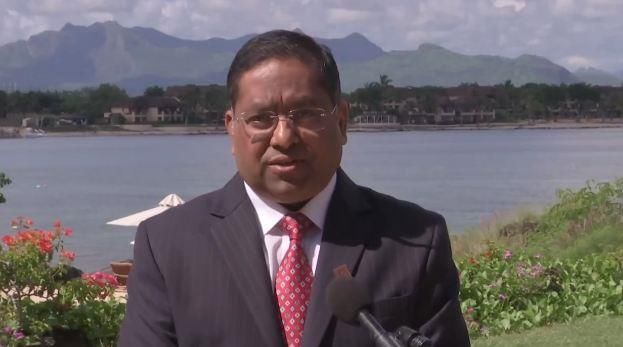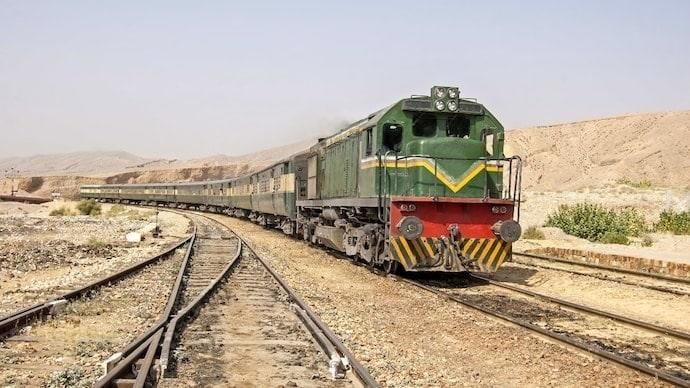UPSC Daily Current Affairs: 12th March 2025 | Current Affairs & Hindu Analysis: Daily, Weekly & Monthly PDF Download
GS3/Environment
Sajjangarh Wildlife Sanctuary
 Why in News?
Why in News?
Recently, a significant wildfire has affected approximately 50 hectares within the Sajjangarh Wildlife Sanctuary located in Udaipur, Rajasthan. This incident highlights the ongoing environmental challenges faced by wildlife sanctuaries in India.
- Sajjangarh Wildlife Sanctuary is situated on the outskirts of Udaipur city.
- The sanctuary is part of the Aravalli hill range, covering around 5.19 square kilometers.
- It is located near the historical Sajjangarh Fort, built in 1874.
- Bari Lake, also known as Tiger Lake, is located on the western slope of the sanctuary.
Additional Details
- Geography: The sanctuary is nestled in the Aravalli hill range, providing a rich biodiversity.
- Vegetation: The area is characterized by a mix of deciduous and semi-evergreen flora, featuring trees such as teak, mango, neem, jamun, khair, and ber. The presence of abundant bamboo groves enhances the habitat significantly.
- Fauna: The sanctuary is home to various wildlife, including panthers, hyenas, wild boars, jackals, sloth bears, sambar deer, spotted deer, and four-horned antelopes.
- The sanctuary is an important ecological zone contributing to the conservation of these species.
The Sajjangarh Wildlife Sanctuary serves as a crucial habitat for diverse flora and fauna, and recent events underline the need for ongoing conservation efforts and awareness regarding environmental preservation.
GS3/Science and Technology
POLG Disease
Why in News?
The recent passing of Prince Frederik, a 22-year-old prince of Luxembourg, has drawn attention to POLG disease, a rare genetic disorder that severely impacts mitochondrial function and energy production in the body.
- POLG is a genetic mitochondrial disorder affecting energy production in the body.
- The disease can lead to multiple organ dysfunctions, primarily affecting the brain, nerves, muscles, and liver.
- Common symptoms range from muscle weakness to severe neurological impairments.
- Currently, there is no cure; treatment focuses on managing symptoms.
Additional Details
- Mitochondria: Often referred to as the "powerhouse" of the cell, mitochondria convert food into ATP (Adenosine triphosphate), the primary energy source for the body.
- Mutations in the POLG and POLG2 genes affect mitochondrial replication, leading to energy deficits.
- Symptoms can manifest from early childhood to adulthood, with a spectrum ranging from mild to severe.
- Common symptoms include muscle weakness, ophthalmoplegia (eye muscle paralysis), epilepsy, and liver failure.
- Neurological issues resulting from POLG can impair balance, speech, and mobility, and may lead to seizures.
In conclusion, POLG disease is a serious condition that requires ongoing research and awareness, especially in light of its impact on young individuals like Prince Frederik. Current treatment strategies focus on improving the quality of life for affected individuals, as there is no known cure.
GS2/Governance
More Signs of Overhauling the Compliance Framework
Why in News?
Corruption, red-tapism, and bribery continue to pose significant challenges to business growth in India, as highlighted by the India Business Corruption Survey 2024. This situation necessitates a critical examination of the economic implications of corruption, excessive compliance regulations, the urgent need for digital transformation, and the impact on India's competitiveness in the global market.
- 66% of businesses acknowledged paying bribes, impacting their operational costs.
- 80% of respondents in an EY-FICCI survey consider corruption a major obstacle to Foreign Direct Investment (FDI).
- Corruption dampens entrepreneurship and job creation, leading to systemic inefficiencies.
- India's compliance framework is overly complex, necessitating urgent reforms for better business conditions.
Additional Details
- Economic Impact of Corruption: Corruption leads to higher business costs, deters foreign investment, and stifles entrepreneurial spirit. The burden of bribes limits resources for growth and job creation.
- Constant Flux of Compliance Regulations: Frequent updates to compliance requirements create confusion and opportunities for corruption. For instance, India recorded 9,420 compliance updates in just one year.
- Need for Labour Law Reforms: Outdated labour laws contribute to compliance-related issues. Although four modern labour codes have been introduced, their implementation is pending.
- Digital-First Compliance System: A digital approach can streamline business registration and compliance processes by consolidating multiple identifiers into a single business identifier.
- Global Competitiveness: With other nations enhancing their business environments, India risks falling behind if it does not modernize its compliance framework.
In conclusion, India must take decisive actions to overhaul its compliance framework, moving beyond incremental changes to create a streamlined, business-friendly environment that prioritizes efficiency and transparency. The time for complacency is over; significant structural changes are essential to attract global investment and foster domestic entrepreneurship.
GS2/Governance
Building Compassion into the Health-Care Structure
Why in News?
On February 7, 2025, the World Health Organisation (WHO) published a significant report titled ‘Compassion and Primary Health Care,’ highlighting the transformative role of compassion in the medical field. WHO’s Director-General emphasized the importance of understanding how compassion can enhance the quality of health-care services, particularly in primary care settings. This report reinforces the call for integrating compassion into medical practice, a concept that has gained traction in various international discussions.
- Compassionate care leads to faster patient recovery and shorter hospital stays.
- Compassion reduces stress and improves job satisfaction for healthcare providers.
- Compassion differs from empathy and sympathy, promoting emotional stability in caregivers.
- Compassionate care is vital in addressing the growing mental health crisis.
Additional Details
- Compassion in Health Care: Compassion extends beyond moral duty; it significantly benefits both patients and healthcare professionals. Research from Stanford University indicates that patients treated with compassion recover more quickly.
- Difference between Compassion, Empathy, and Sympathy: Compassion involves understanding a patient's suffering while maintaining emotional stability, unlike empathy, which can lead to emotional exhaustion.
- The Importance of Compassion in Mental Health: With rising mental health disorders globally, compassionate care is essential to provide a supportive environment for patients, helping them feel understood and valued.
- Case Study: The story of Pradeep, a child who underwent severe trauma, illustrates how a compassionate approach in mental health care can facilitate healing and recovery.
In conclusion, health care transcends merely treating illnesses; it encompasses promoting overall well-being. By prioritizing compassion in medical practice, training, and ensuring equitable access to care, the global medical community can create a compassionate health-care system that respects the dignity of every patient.
GS2/Polity
Miles to go: On change in Manipur, the road to normalcy
Why in News?
After enduring months of ethnic turmoil, the Union government has intervened by dismissing the N. Biren Singh-led government in Manipur and imposing President’s Rule. This decision is aimed at restoring peace and stability in the region.
- The ethnic conflict in Manipur involves multiple communities with distinct demands.
- The Union government has initiated several steps to restore order and facilitate dialogue.
Stakeholders in the Ethnic Conflict
- Meitei Community: This group seeks to protect the territorial integrity of Manipur and opposes any division of the state. For example, they have resisted the formation of a separate Kuki-Zo administrative region, fearing fragmentation of their territory.
- Kuki-Zo Community: They are advocating for Union Territory status or a separate administrative arrangement to ensure their identity and security. Civil society organizations representing them have warned against unrestricted movement unless their governance requests are addressed.
- Naga Community: They oppose any territorial changes that could jeopardize their ancestral lands and autonomy. Naga groups have resisted the Kuki-Zo demand for Union Territory status due to concerns over territorial claims.
- Union Government: Their objective is to restore law and order, recover stolen arms, and facilitate the reopening of highways that have been blockaded.
Steps Taken by the Union Government
- Weapon Recovery Drive: The government has initiated efforts to retrieve stolen weapons from non-State actors. They set a deadline for militant groups to return arms looted from police armories, successfully recovering nearly one-third of the 3,000 missing firearms.
- Clearing Highway Blockades: Efforts are underway to remove blockades on essential highways to restore the free movement of goods and people. Unfortunately, attempts to clear blockades in Kangpokpi district resulted in one death and over 40 injuries.
- Strengthening Security Measures: Additional central forces have been deployed to manage violence and secure vulnerable areas, with increased paramilitary presence in both hill and valley regions to prevent ethnic clashes.
- Engaging in Dialogue: The government has encouraged discussions with community representatives while rejecting violent separatist threats. Continuous talks with leaders from the Meitei and Kuki-Zo communities aim to find a peaceful resolution.
- Central Leadership Involvement: Senior government officials are actively engaging to address grievances and appeal for peace, with the Union Home Ministry emphasizing the importance of dialogue to restore calm.
Risks of Granting Union Territory Status to Kuki-Zo Areas
- Deepening Ethnic Divisions: Granting Union Territory status could exacerbate tensions between communities, jeopardizing the fragile social fabric and complicating reconciliation efforts.
- Resistance from Other Communities: The proposal may encounter strong opposition from other ethnic groups, such as the Nagas, who view a separate Kuki-Zo region as a threat to their own territorial claims.
- Undermining Territorial Integrity: Fragmenting the state could weaken Manipur's territorial integrity and set a precedent for additional separatist demands, complicating governance and stability.
Way Forward
- Inclusive Dialogue and Mediation: Continuous engagement with all ethnic groups is essential to address grievances and promote mutual understanding through impartial mediation.
- Strengthening Law and Order: Enhancing efforts to recover illegal weapons, enforce the rule of law, and ensure equitable development is crucial for rebuilding trust and maintaining peace.
In summary, the situation in Manipur requires careful handling of the ethnic dynamics and a commitment to dialogue to restore peace and prevent further escalation of conflict.
GS2/Governance
Pratibimb Module Overview
Why in News?
The Pratibimb Module has significantly contributed to law enforcement efforts, leading to the arrest of 6,046 accused individuals, establishing 17,185 linkages, and generating 36,296 requests for cyber investigation assistance, as reported in the Lok Sabha.
- The Pratibimb Module is a Geographic Information System (GIS)-based software.
- It was launched by the Union Home Ministry's Indian Cyber Crime Coordination Centre (I4C).
- The module aids enforcement agencies in mapping cybercriminals in real-time.
- It projects mobile numbers associated with cybercrimes into a GIS map across India.
Additional Details
- Pratibimb Module: This software provides law enforcement agencies (LEAs) and service providers with a map view to identify the actual locations of mobile numbers engaged in criminal activities.
- Samanvaya Platform: Launched by the Ministry of Home Affairs, this platform facilitates coordination among LEAs for cybercrime data sharing and analytics, focusing on interstate linkages of cybercrime complaints.
- Indian Cyber Crime Coordination Centre (I4C): Established under the Ministry of Home Affairs to tackle cybercrime in a coordinated manner, I4C aims to improve collaboration among LEAs and stakeholders.
- Functions of I4C:
- Acts as a nodal point in combating cybercrime.
- Identifies research needs of LEAs and conducts R&D for new technologies.
- Prevents misuse of cyberspace by extremist and terrorist groups.
- Suggests amendments to cyber laws as needed to keep pace with technological advancements.
- Facilitates the implementation of Mutual Legal Assistance Treaties (MLAT) for international cooperation on cybercrimes.
- Engages academia, industry, and government in the prevention and prosecution of cybercrimes.
- The I4C has introduced a Cyber Crime Volunteers Program to involve citizens in the fight against cybercrime.
In summary, the Pratibimb Module represents a significant advancement in the tools available to law enforcement agencies for combating cybercrime, enhancing their ability to track and manage criminal activities in real time.
GS3/Defence & Security
INS Imphal's Maiden Port Call in Mauritius
 Why in News?
Why in News?
The Indian Naval Ship (INS) Imphal has recently made its inaugural port call at Port Louis, the capital of Mauritius, in anticipation of the country's 57th National Day celebrations on March 12.
- INS Imphal is the third ship of the Project 15B Visakhapatnam-class stealth-guided missile destroyers.
- Commissioned in December 2023, it is the first naval warship named after a city in Northeast India.
- The ship features advanced capabilities, including anti-submarine warfare.
Additional Details
- Design and Construction: The ship was designed in-house by the Navy's Warship Design Bureau and constructed by Mazagon Dock Ltd. (MDL).
- Specifications:
- Length: 164 metres
- Displacement: Over 7500 tonnes
- Maximum Speed: 56 km/hr
- Indigenous Content: The destroyer has a 75 percent indigenous content, featuring the BrahMos missile, torpedo tube launchers, and a 76mm super rapid gun mount.
- Advanced Systems:
- Equipped with modern surveillance radar for target data.
- Includes a Total Atmospheric Control System (TACS) for protection against chemical, biological, and nuclear threats.
- Crest Design: The design includes the Kangla Palace and 'Kangla-Sa', a mythical guardian from Manipur's history.
INS Imphal represents a significant advancement in India's naval capabilities and serves as a symbol of the country's maritime strength, especially in relation to its northeastern heritage.
GS2/International Relations
Pakistani Baloch Separatist Militants Behind Train Hijacking
 Why in News?
Why in News?
On March 11, 2025, insurgents from the Balochistan Liberation Army (BLA) attacked and hijacked the Jaffar Express, which was en route from Quetta to Peshawar in the Bolan district of Balochistan. The BLA took responsibility for the attack, claiming that they took 182 people hostage, killed 20 Pakistani military officers, and shot down a drone. This incident marks one of the most significant recent assaults by Baloch insurgents amidst ongoing unrest in the region.
- The BLA is recognized as a terrorist organization by Pakistan and the United States.
- The hijacking of the Jaffar Express is part of a larger pattern of escalating violence in Balochistan.
Additional Details
- Background of the Baloch Insurgency: The BLA emerged in the early 2000s with the aim of achieving independence for Balochistan, a region rich in natural resources but economically underdeveloped. It has been involved in numerous attacks against security forces and civilians.
- BLA's Structure and Activities: The Majeed Brigade, a suicide squad since 2011, led the recent hijacking. Other units involved include the Special Tactical Operations Squad (STOS), Fatah Squad, and Zirab Units, indicating a well-organized militant structure.
- Historical Context: The roots of the insurgency extend beyond the BLA, reflecting a long-standing separatist movement. The BLA claims that Balochistan's resources are exploited by the federal government, primarily benefiting the Punjab province.
- Foreign Involvement: Allegations persist regarding India's support for Baloch insurgents, which India denies. The China-Pakistan Economic Corridor (CPEC) has also been targeted by Baloch militants who regard it as exploitative.
The recent train hijacking by the BLA highlights the ongoing challenges faced by Pakistan in dealing with separatist movements in Balochistan, especially concerning the region's strategic and economic significance. As the insurgency continues, the implications for regional stability and international relations remain profound.
GS1/Indian Society
Building Compassion into the Health-Care Structure
Why in News?
The emphasis on compassionate health care has gained traction recently, highlighted by the WHO's report titled "Compassion and Primary Health Care." This report underscores the essential role of compassion in transforming health care and improving patient outcomes, making it a critical topic for discussions in policy-making and ethics.
- Compassion is identified as a core value essential for enhancing primary health care outcomes.
- Compassionate care contributes to improved recovery rates, shorter hospital stays, and reduced anxiety among patients.
- Healthcare providers benefit from compassion through reduced stress and increased job satisfaction.
- Distinguishing compassion from empathy and sympathy is crucial for effective patient care.
- The WHO advocates for integrating compassion into health systems and training programs for healthcare workers.
Additional Details
- Compassion as a Transformative Force: The WHO report emphasizes that compassionate interactions can significantly enhance patient recovery. For instance, a study by Johns Hopkins found that a cancer patient's recovery improves with just 40 extra seconds of supportive communication from doctors.
- Benefits for Patients: Compassionate care leads to quicker recovery, reduced pain, and enhanced patient trust. Patients who receive compassionate communication are more likely to comply with treatment and report higher satisfaction levels.
- Benefits for Health-Care Providers: Compassion helps reduce emotional exhaustion and burnout among healthcare professionals, fostering resilience and improving job satisfaction. Nurses practicing compassionate care often report better relationships with patients.
- Distinguishing Compassion: Compassion involves recognizing a patient’s suffering and taking active steps to alleviate it, whereas sympathy is merely feeling concern without shared emotional experience, and empathy involves understanding feelings but can lead to emotional fatigue.
- Government Initiatives: The government has launched several programs, such as Ayushman Bharat and the National Health Mission, to enhance healthcare access and improve compassionate care delivery.
In conclusion, integrating compassion into health care is not only a moral imperative but also a necessity for sustainable development. By recognizing the vital role of compassion in health systems, we can foster a more effective and humane healthcare environment for both patients and providers.
GS3/Science and Technology
What are Collisionless Shock Waves?
 Why in News?
Why in News?
A recent study published by Johns Hopkins University (USA) and Northumbria University (UK) highlights the role of collisionless shock waves as cosmic accelerators. These waves enable subatomic particles to gain ultra-high energy and traverse vast distances in space.
- Collisionless shock waves are disturbances in plasma (ionized gas) where energy transfer occurs without direct particle collisions, relying on electromagnetic forces.
- These shock waves are found in environments such as supernova remnants, black hole disks, pulsars, magnetars, and planetary magnetospheres.
- They function as natural cosmic accelerators, enhancing the speed of electrons and other charged particles to ultra-high levels.
Additional Details
- Key Findings from the Study: NASA's MMS, THEMIS, and ARTEMIS missions observed an electron acceleration event near Earth’s bow shock on December 17, 2017. Electrons in Earth’s foreshock region gained 500 keV of energy, achieving 86% of the speed of light, a significant increase from their typical 1 keV.
- Diffusive shock acceleration, known for producing high-energy cosmic rays, requires electrons to already be moving at 50% of light speed before further acceleration can take place. This study sheds light on how electrons receive this initial energy boost, addressing a long-standing astrophysical mystery.
- Previously, supernova explosions were considered the primary source of high-energy cosmic rays. However, this study suggests that interactions between planetary magnetospheres and stellar winds may also play a crucial role.
- How Shock Waves Accelerate Particles without Collisions: In contrast to solids, liquids, or gases where energy is transferred through molecular collisions, particles in plasma interact via electromagnetic fields. This mechanism enables shock waves to accelerate electrons without direct contact.
- Multi-Stage Acceleration Process: Plasma waves interact with electrons, imparting initial energy. Magnetic turbulence at the shock front causes electrons to spiral, thereby increasing their speed. Repeated interactions with plasma waves propel electrons to relativistic speeds.
- Role of Earth’s Bow Shock & Foreshock: When the solar wind collides with Earth’s magnetosphere, it forms a turbulent region ahead of the shock wave, which facilitates efficient electron acceleration.
This groundbreaking study enhances our understanding of cosmic phenomena and the mechanisms behind particle acceleration, potentially leading to advancements in astrophysics and space exploration.
GS2/Governance
PM Schools for Rising India (PM SHRI) Scheme
Why in News?
The Union Education Minister recently criticized the Tamil Nadu government for being "dishonest" in its implementation of the PM SHRI scheme, leading to disruptions in the Lok Sabha.
- The PM SHRI Scheme is a centrally sponsored initiative launched in 2022.
- Aims to upgrade 14,500 schools as model institutions for the implementation of the National Education Policy (NEP) 2020.
Additional Details
- Objective: The scheme aims to create inclusive and nurturing schools equipped with modern infrastructure, focusing on holistic education and competency-based learning.
- Implementation Period: The scheme will be active from 2022-23 to 2026-27, after which states and Union Territories (UTs) will be responsible for maintaining achieved benchmarks.
- Funding Pattern:
- 60:40 ratio for the Centre and State/UTs with legislature.
- 90:10 ratio for Northeastern and Himalayan states, as well as Jammu & Kashmir.
- 100% central funding for UTs without legislature.
- States must sign a Memorandum of Understanding (MoU) with the Centre to participate in the scheme.
- Key Features:
- Focus on holistic learning through communication, collaboration, and critical thinking.
- Inclusion of modern facilities such as smart classrooms and vocational labs.
- Implementation of green initiatives for water conservation and waste recycling.
- Competency-based assessments linked to real-life applications.
- Eligible Schools:
- Schools managed by Central/State/UT Governments and local bodies.
- Kendriya Vidyalayas (KVs) and Jawahar Navodaya Vidyalayas (JNVs) that have permanent buildings.
- School Quality Assessment Framework (SQAF): This framework ensures performance evaluation and institutional excellence.
- Selection Process:
- Challenge Mode: A three-stage process including signing with the Centre, identifying eligible schools using UDISE+ data, and a competitive selection verified by States/UTs/KVS/JNV.
- Final selection is conducted by an Expert Committee headed by the Education Secretary.
In conclusion, the PM SHRI Scheme represents a significant effort by the Indian government to enhance educational standards and infrastructure across a wide range of schools, ensuring a comprehensive approach to learning and development in line with modern educational needs.
|
55 videos|5389 docs|1141 tests
|
FAQs on UPSC Daily Current Affairs: 12th March 2025 - Current Affairs & Hindu Analysis: Daily, Weekly & Monthly
| 1. What is the Sajjangarh Wildlife Sanctuary known for? |  |
| 2. What is POLG disease and what are its symptoms? |  |
| 3. How is the compliance framework being overhauled in various sectors? |  |
| 4. What does building compassion into the health-care structure entail? |  |
| 5. What are the main challenges faced in achieving normalcy in Manipur? |  |





















